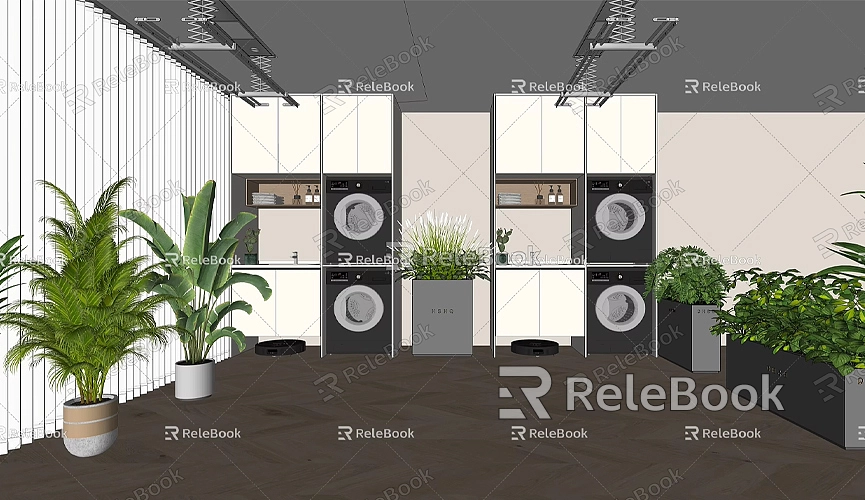How to Edit 3D Warehouse Models in SketchUp
In the fields of architecture, interior design, and product design, the use of 3D models has become a significant trend. SketchUp, a powerful modeling tool, offers a wealth of model resources, with 3D Warehouse being one of the most popular libraries. This article will explore how to edit 3D Warehouse models in SketchUp to better meet your design needs.
Accessing and Downloading 3D Warehouse Models

First, you need to access 3D Warehouse, the online model library built into SketchUp, which contains tens of thousands of user-uploaded models. Within the SketchUp software, you can select "3D Warehouse" from the "Window" menu to browse and download models directly, or visit [3D Warehouse](https://3dwarehouse.sketchup.com/) in your browser.
Once you find a model that suits your project, click the “Download” button. Typically, models will be saved in SKP format, allowing you to open them directly in SketchUp. If you encounter issues during the download process, check your internet connection and try refreshing the page.
Importing the Model into SketchUp
After downloading, open SketchUp and create a new project or edit an existing one. Use the “Open” option in the “File” menu to locate the downloaded model, click “Open” to import it into your workspace. You will see the model appear in your design interface.
Basic Editing Tools for the Model

Once the model is imported, you can start editing. SketchUp offers various tools; here are some commonly used editing tools and techniques:
- Select Tool: First, use the select tool to choose the part you want to edit. Click the “Select” tool, then click on the object in the model to ensure you have selected the correct element.
- Push/Pull Tool: Use the “Push/Pull” tool to easily modify the shape of the model. Select a face, then click and drag to push or pull that face, adjusting the model’s thickness or appearance.
- Move Tool: If you need to change the model's position, use the “Move” tool. Select the part you want to move, then click and drag it to a new location. This is effective for adjusting the overall layout of the model.
- Rotate Tool: When you need to rotate a component, use the “Rotate” tool. Select the object, click the center point of rotation, and drag to adjust to the desired angle. This is useful for arranging furniture or architectural structures.
- Scale Tool: If you need to adjust the size of the model, use the “Scale” tool. Select the object and drag to change its dimensions. Be sure to maintain the model's proportions to avoid distortion.
Refining and Optimizing the Model
After basic editing, you can make more detailed adjustments to enhance the model's quality and usability:
- Check Model Integrity: Inspect the imported model for any missing parts or irregular faces. If issues are found, use the “Push/Pull” tool or “Smooth” tool to repair them.
- Grouping and Components: Create groups or components from commonly used parts to avoid affecting other elements during editing. Select the objects you want to group, right-click, and choose “Make Group” or “Make Component.”
- Hide Unwanted Parts: If the model contains unnecessary elements, use the “Hide” function to temporarily hide them, allowing you to focus more on the current editing portion.
Adding Materials and Textures
To make the model more realistic, adding appropriate materials and textures is essential. You can use SketchUp's built-in material library or download additional texture resources from the web. If you need high-quality 3D textures and HDRI while creating models and virtual scenes, you can download them for free from [Relebook Textures](https://textures.relebook.com/). Relebook provides abundant resources to enhance your design and create more vibrant scenes.
Saving and Exporting the Model
After editing, don’t forget to save your work. In the “File” menu, select “Save” or “Save As” to ensure the modified model is stored in an appropriate location. Additionally, if you need to export the model to other formats like OBJ or FBX, you can do so through the “Export” option in the “File” menu.
Application in Design Practice
Having learned how to edit 3D Warehouse models, you can flexibly apply these skills in actual design projects. For example, when creating an interior design scheme, you can download various furniture models from 3D Warehouse, edit and arrange them according to your layout, making the design more aligned with practical needs.
Editing 3D Warehouse models in SketchUp is a straightforward yet effective process. By learning how to download, import, and edit models, you can create works that better fit your design needs. Additionally, using materials and textures wisely can greatly enhance the model's visual appeal. If you need high-quality 3D textures and HDRI, visit [Relebook Textures](https://textures.relebook.com/). For exquisite 3D models, check out [Relebook Models](https://3dmodels.relebook.com/), which offers a wealth of quality resources. I hope this article helps you edit models in SketchUp with greater ease, elevating your design capabilities and creating even more impressive works!

